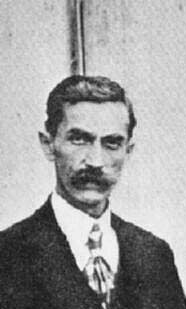Manuel Mondragón
Manuel Mondragón (born Ixtlahuaca, State of Mexico, 1859 - died San Sebastián, Spain, 1922) was a Mexican military officer who played a prominent role in the Mexican Revolution. He graduated from the Mexican Military Academy as an artillery officer in 1880. He designed the world’s first gas-operated semi-automatic rifle, the M1908 rifle, and a 75mm howitzer. General Mondragón was the father of a model, artist and poet Carmen Mondragón, better known as Nahui Ollin.
Manuel Mondragón | |
|---|---|
 | |
| Born | 1859 Ixtlahuaca, State of Mexico |
| Died | 1922 (Aged 63) San Sebastián, Spain |
| Allegiance | |
| Years of service | 1880–1914 |
| Rank | General de División |
| Commands held | Secretario de Guerra y Marina |
| Battles/wars | Mexican Revolution |
| Awards | Légion d'honneur |
| Relations | model/artist/poet Carmen Mondragón (Nahui Ollin) |
Porfiriato
As an adolescent Mondragón entered the Military Academy of Chapultepec, where he specialised in artillery. Upon finishing his studies, he worked developing military materiel. He modified the French 75mm howitzer, earning a name for himself among Porfirist military circles. He perfected a repeating rifle and a 75mm howitzer (the Saint-Chamond-Mondragón), both of which still bear his name. In 1904 he wrote a manual Description and employment of the instruments for preparing and executing fires, and in 1910 Description of rapid-fire 75mm materiel. In 1907 he was named Director of the Department of Artillery.
He initiated a project on military organic law, based on mandatory military service, and as professor of the Military Academy released a work in 1910 entitled Defense of the Coasts. The artillery at the ports of Salina Cruz on the Pacific and Puerto México on the Gulf are due to his efforts.
As a military officer during the Porfirato, he worked against the Maderista movement. In September 1911, he took leave from the Federal Army, but in 1913 returned, reincorporated in the army to support Gregorio Ruiz in the anti-Maderista rebellion of the Decena trágica.
Revolution
At the side of Bernardo Reyes and Félix Díaz, Mondragón assisted in the start of the rebellion and coup against Francisco I. Madero. He allied with General Victoriano Huerta as Madero was obliged to renounce the presidency, thus frustrating the start of a new democratic direction in the country. Upon Huerta's assumption of the presidency, Mondragón was named Secretary of War and the Navy. He served in this position only a short time, as in June he resigned amid accusations from prominent Huertist politicians and public opinion of his culpability in the advance of revolutionary forces, due to his incompetence and poor planning in the campaign against them.
Exile
Following these accusations, Victoriano Huerta expelled Mondragón from Mexico, heeding the rumor of a plot to overthrow him. Mondragón left for Spain, where the government of France awarded him the Légion d'honneur. General Manuel Mondragón died in exile in San Sebastián in 1922.
Bibliography
- Francisco Naranjo. Diccionario biográfico Revolucionario. Imprenta Editorial "Cosmos", Mexico, 1935. ISBN 968-805-293-0.